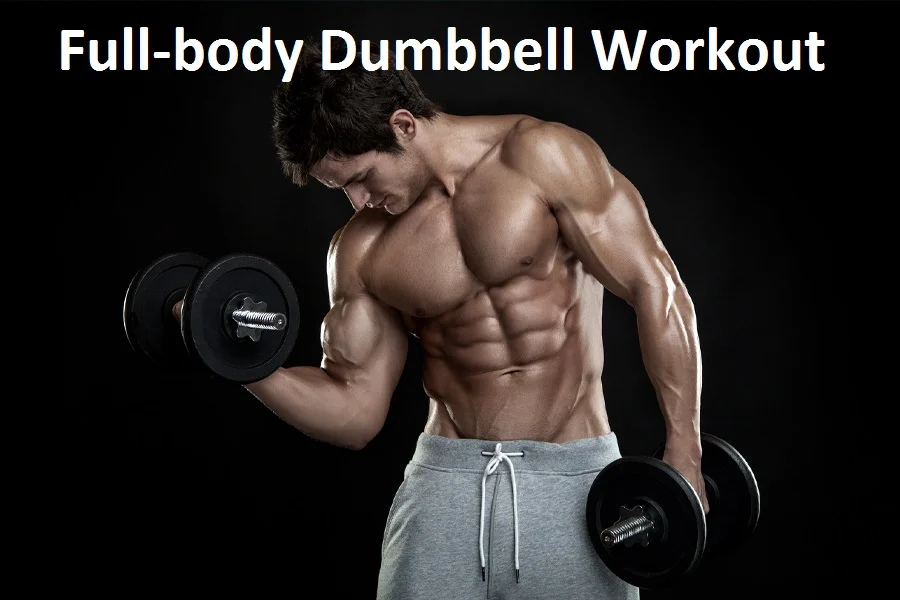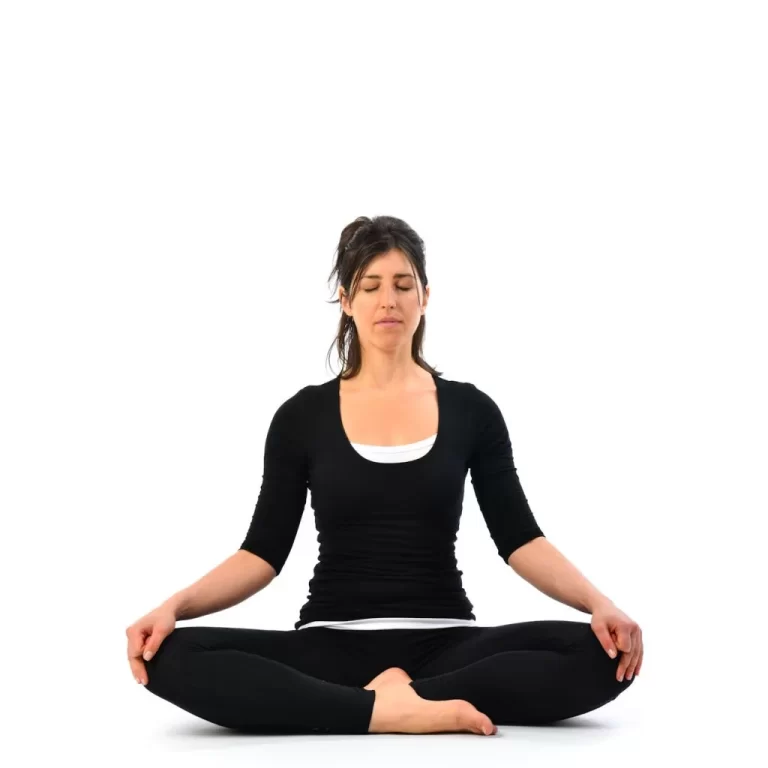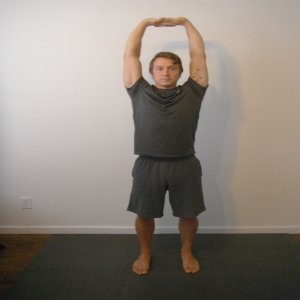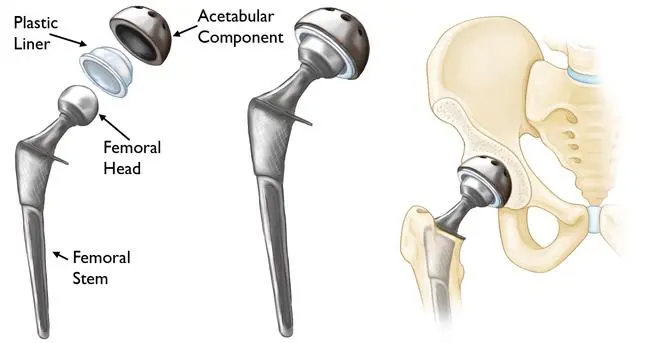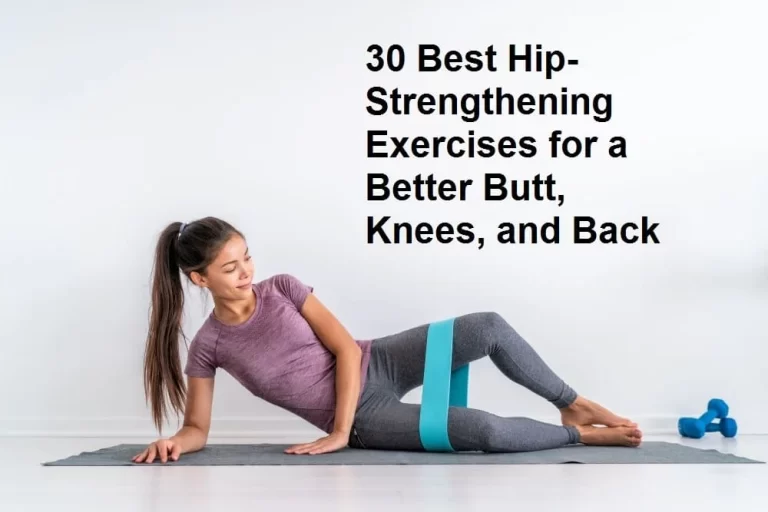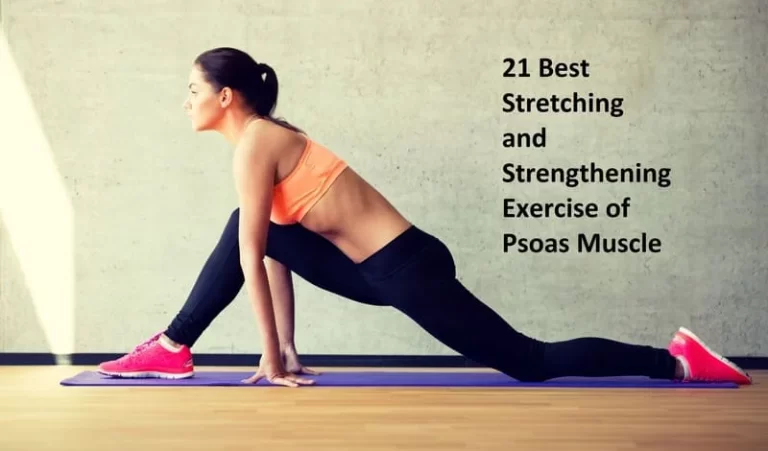28 Best Full-body Dumbbell Workout
Dumbbell workouts are popular for multiple reasons, including the fact that they offer more variation than nearly any other piece of gym equipment while also encouraging some creativity, but dumbbell workouts can also help you speed up the fat loss, increase total-body strength, develop top muscular mass, and even improve your cardio.
If you use dumbbells, you won’t ever need to worry about barbell collars, you won’t have to fiddle with weight plates, and you can guarantee that there will always be a pair of open dumbbells on the gym floor. Something we can not assure about the weight bench – especially if it is chest day. But more fool them, For those in the know, there is a gold mine waiting for you, a world of pursuits you didn’t know existed, and exercises that will provide the same outcomes as those who lift heavy iron from the floor. And we are proceeding to show you how.
Introduction:
If you do not have time to go then this exercise is perfect for you to build serious muscle, strength, and conditioning. All you require is two dumbbells and an exercise plan. I set together four complexes, individually using nothing more than a set of dumbbells and your body.
Complexes are fantastic because they require you to finish a high-volume workout quickly.
Exercises using a dumbbell need more stabilization and activation of muscles than bilateral or barbell exercises do, making dumbbell routines more progressive. Because these exercises allow for movement compared to the rigidity of barbell workouts they help you develop muscles that are more useful in everyday activities. Additionally, you may achieve a wider range of motion with dumbbells than with a fixed machine because they are easier to use and transport.
How Does This Total-body Dumbbell Workout Works?
Excluding saving areas, dumbbells provide a total total-body workout in less time. In this at-home workout with dumbbells, we will do a lot of exercises as a circuit. Do individually exercise sequentially, resting only once you have completed a complete round of the circuit. Do 3 sets total. Attempt to only rest for about a minute between two rounds; the idea is to keep your heart pumping hard throughout the workout.
These exercises alternate between moving and pulling, or your upper limb and lower limb. That way, one individual muscle group won’t get too exhausted over time, holding time and also supplying a bit of aerobic advantage.
Advantages of Dumbbell Exercises & Training:
- Improve stabilization and muscle activation, therefore drafting more muscle fibers.
- This practice is typically safer to achieve when training alone.
- This will push limbs to operate unilaterally, recognizing weaknesses.
- This is useful for overloading muscles for hypertrophy and will expand the range of motion.
- This activity is the most readily-available and easily-scalable weight on the gym ground.
- This activity allows you to level out any annoying muscle inequalities as they appear. Evenly-distributed earnings keep damage at bay later down the line.
Are Adjustable Dumbbells Worth it?
If you are working to utilize your gym membership and your residence room is not big sufficiently to house the squat rack, weight bench, and barbell, then adjustable dumbbells are worth their weight in gold.
Even while they may initially cost a little more than a pair of 16s, a decent set of adjustable dumbbells with up to 24 different weight options will help minimize confusion and maximize gains. Let us break down the benefits:
- Adjustable dumbbells are universal, permitting you to cater your training based on the muscle you are targeting and the type of movement you are doing.
- Adjustable dumbbells let you progress, making it effortless to switch easily between weights.
- Adjustable dumbbells preserve space.
- Adjustable dumbbells can be moved; it can be difficult to carry them to the park, but once you decide on a weight and a workout (from the list below), there is no stopping you.
Can I Do Dumbbell workout every day?
While regularly using dumbbells is a smart strategy to increase muscle mass and strength, it’s crucial to get enough rest. Naturally, if you are exerting yourself vigorously during your workouts, you will require more downtime than if you were exercising more lightly. As a law of thumb, a high-intensity workout needs at least 48 hours of rest in between sessions. Not only will this help ensure you avoid injury, but it will mean you make the implementation gains required to see the results you want
An analysis posted by The Journal of Strength and Conditioning Research examined the activity recovery of men after they finished exercises to failure and concluded that 24 hours of rest wasn’t adequate. At 48 hours of recovery, 42% were recovered, and after 73 and 96 hours of recovery, 82% were recovered. Therefore, if you are thinking about moving to high intensity and exercising every day without rest, you could be damaging your results. Maintain an eye on your recovery and make a reasonable decision based on your exercise exertion and how your body is feeling.
Top Dumbbell Exercises For Your Chest, Arms, Shoulders, Back, and Legs:
Here we recommend the best dumbbell exercises to count to your workout. You will discover the benefits of individual exercise, the precise muscles that it targets, and how to perform it with perfect technique: Scroll on for our pick of the best dumbbell workouts for building muscle. There is no time like the present, so obtain to work.
Bicep Curl

Muscles worked: Biceps, deltoids, brachialis, and brachioradialis.
How: Grab a dumbbell in both hands and with your arms swinging by your sides, curl the dumbbell up to shoulder level while tightening your biceps. Hold for a second then gradually lower it.
This is a perfect beginner exercise. The scheme is not to go heavy; it is all about extending and shortening the muscle, so hold a weight you are comfortable with and away you go.
Goblet Squat

Quads, calves, glutes, abs, arms, and grip strength were all worked.
How to do: Grab a dumbbell with both hands in front of your chest while you stand straight with your feet wider than shoulder width. Seat back into squatting, then push back up and repeat.
These Goblet squats are ideal for any level. ‘They particularly target glute activation whilst enhancing both hip and thoracic mobility.’
Arnold Press
Muscles worked: Deltoids, triceps, traps.
How: take a seat on a bench and hold dumbbells out in front of you with the palms towards your shoulders as if you were about to perform a bicep curl. Move the dumbbells up over your head while turning your arms until your palms face away from you. Extend your arms, wait, then reverse the direction.
This potent upper-Limb move is unique in that it utilizes all three areas of your deltoid – the round-looking muscle that caps your shoulders – counting thickness and width and supporting the joint.
Dumbbell Clean
Muscles worked: Glutes, calves, quads, biceps.
How to do it: Flip your wrists around so they face forward, then raise the dumbbell to your shoulders while gently hopping. Gradually straighten your legs to stand. Next, lower the weights to your thigh before forcing yourself into a squat and repeating.
Add these exercise lifts into your exercise plan will not only build lean muscle tissue but also help explosive strength. This activity also flows blood to your glutes, hamstrings, shoulders, and arms to maximize your muscle-growing power.
Renegade Row
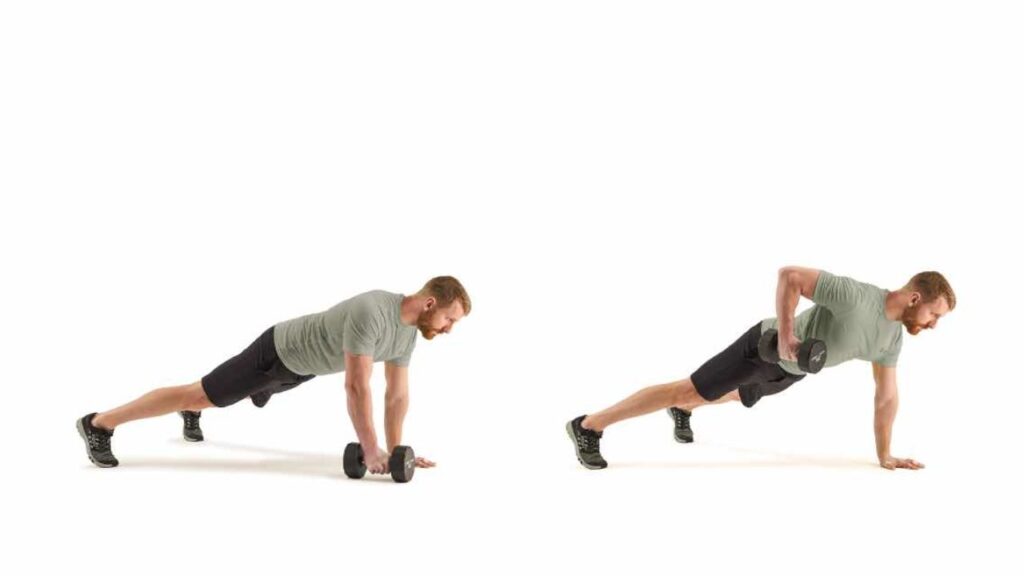
Muscles worked: forearms, lats, rhomboids, delts, abs, and obliques.
How: place your hands on the grips of two dumbbells to form a press-up stance. Maintaining your core tightened, row the correct dumbbell up to your abdominals then return to the beginning position. do this with the left dumbbell to complete one repetition.
: Make a strong back, torch your abs, and create anti-rotational core strength in one fell swoop. While it is attractive to focus on the ‘row’ element of the training, the secret to obtaining the most out of this move is to double down on your plank positioning.
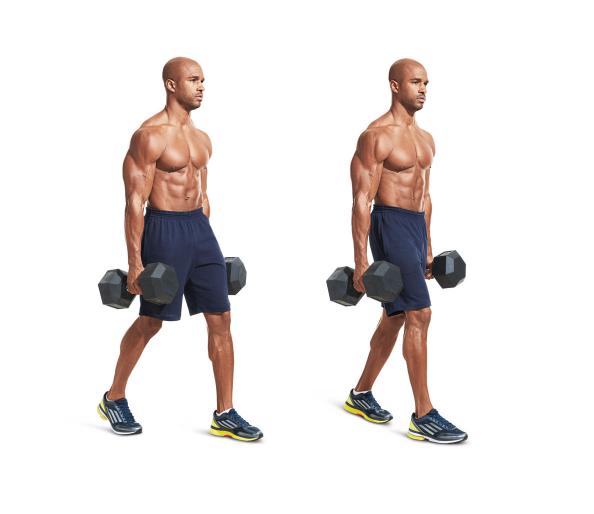
Farmers’ Walk
Muscles worked: adductors, glutes, hamstrings, quadriceps, triceps, shoulders, forearms, and upper back.
How: Grab a dumbbell in both hands and Walk forward taking short, quick steps. Try to cover the distance as quickly as you can.

you will supercharge your grip power, which is a heavy plus. Additionally, this move strengthens your rotator cuffs, covering your shoulders from injury during more major lifts.
Zottman Curl
Muscle worked: Biceps, brachialis, and brachioradialis.
How: Curl the dumbbell up to your shoulders with a pair of dumbbells by your sides and your hands facing forward. Once you reach the top of the action hold, and then rotate your hands so your palms are facing downwards as you gradually return then dumbbells back to the initial position using this overhand grip. When the weight reaches your thighs again, turn your hands so your palms are back in the initial position facing forward.
As well as preparing your biceps, this action will also fire up your forearms.
Flat Dumbbell Fly
Muscles worked: Delts, pecs, rhomboids, rotator cuffs, serratus anterior, and biceps.
How: Lie on a flat bench with your palms facing inwards and two dumbbells at your shoulders. When your arms are almost fully stretched, raise the dumbbells. This is your initial position. From here, drop the weights down to your sides with a small flexion of your arms until you experience a stretch across your chest. Compress your pectoralis to return the weights to the beginning position by reversing the direction.
This action is better than the bench press for producing the chest muscle fibers that spark growth – and you do not require anywhere near as serious weights to do it. Just take care not to lock your arms out during the stretching, or you will transfer the load away from your pectoralis and onto your elbow joints.
Bent-Over Row
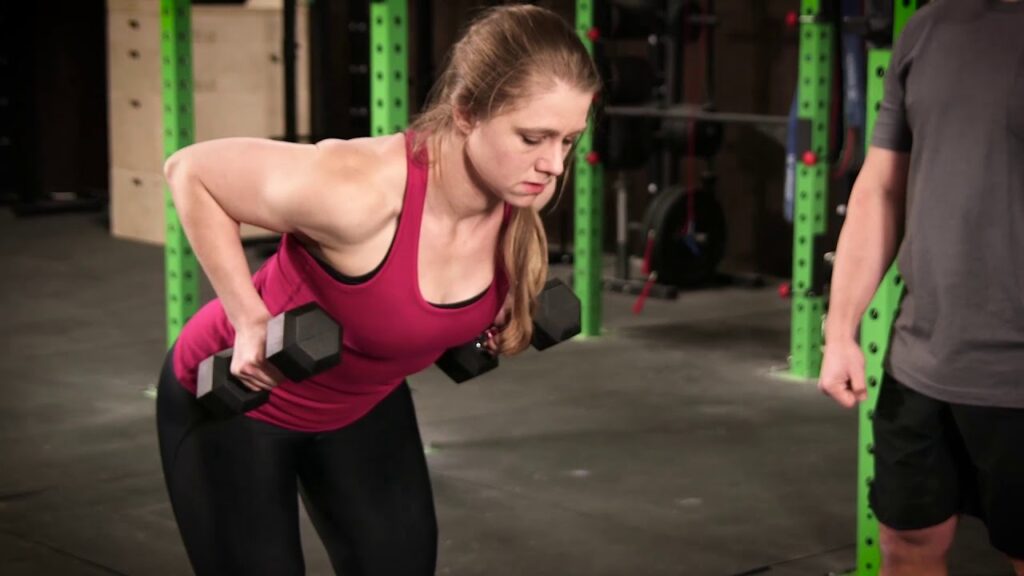
Muscles worked: Hamstrings, glutes, spinal erectors, forearms, lats, and shoulders.
How: Maintain your core tight and you are back straightforward as you propel the dumbbell up to your chest. More down and repeat.
Rows will target several muscles in your upper limb including the traps, rhomboids, lats, and biceps perfect for getting you that ‘V’ shape. Additionally, it will focus on your deltoids to develop those boulder shoulders that can fit a T-shirt.
Devil’s Press
Muscles worked: Chest, shoulders, arms, calves, quads, glutes, and the core.
How: Have both dumbbells, lower down into a press-up position, and complete a burpee. when you begin to stand back up, utilize the speed to hang the weights between your lower limbs, then directly overhead. Lower under control, back to the floor, and repeat.
If you feel like burpees are reaching too easy, try the devil’s press. Aside from the full cardio workout, This will builds muscle and power with the addition of the dumbbells by utilizing your nearly muscle in the body. They will make standard burpees feel like a draft.
Two-Arm Dumbbell Stiff Legged Deadlift
Muscles worked: Hamstrings, erectors, lats, glutes.
How: Drop the dumbbells to the top of your feet, as much as you can go by spreading them through your waist, then gradually return to the initial position.
Concentrating on your fast-twitch lower-limb muscles turns your legs into powerful pins. Plus, stiff-legged deadlifts deliver your entire posterior chain functioning effectively and control hip and lower back injuries. It is one of the most injury-free low-weight exercises for strengthening your lower limb.
Dumbbell Kickbacks
Muscles worked: Triceps.
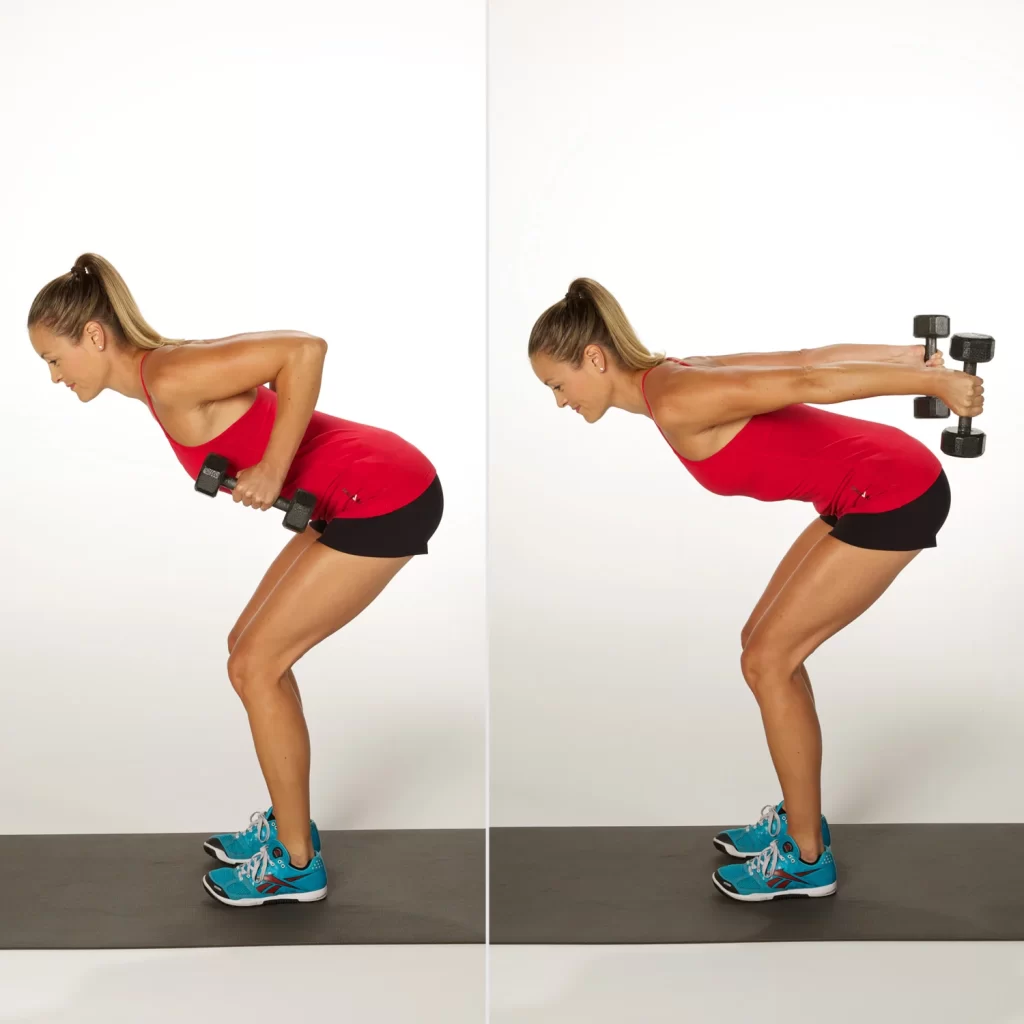
How: Hinge from the hips by moving your hips behind your heels with a flat back. Begin with your arms flexed, getting the dumbbells next to your thighs so your upper arms are parallel to the ground. extend your arms behind you using your forearms. Return gradually to the beginning position and do it again.
Hands up if you are guilty of neglecting your triceps. Yeah, we felt as much. They might not be mirror muscles, but strong triceps are important for effective upper-limb training, and your chest and shoulders in particular stand to help. To build sleeve-filling muscle, this exercise concentrates on the lateral head, which is the most noticeable of your triceps’ three heads.
One Arm Swing
Muscles worked: shoulders, abs, quadriceps, and hamstrings.
How: Drop into a squatting position and sway the dumbbell through your legs before directly driving yourself forward, getting the weight up towards your head as you extend your legs. do this movement, then exchange sides.
With good form, this swing will not only draft muscles within your posterior chain but will also make your grip strength, coordination, lower back muscles, quadriceps, and shoulders. In other words, it will give you the momentum your body modification workout needs.
Dumbbell Bench Press
Muscles worked: rhomboids, lats, traps, forearms, shoulders, and triceps.
How: To start this exercise Lie on a flat bench having two dumbbells over your chest with an overhand grip. Press up until your arms are extended, then lower under control.
If you are looking to make quality pectorals demand then always the option for a dumbbell press over a barbell. A weight in both hands permits for a greater stretch at the bottom of the ride, building a larger chest. And if you want to take this move further, Compress your pecs together at the top of the ride to recruit as many muscle fibers as possible.
Dumbbell Shoulder Press
Muscles worked: Delts, traps, triceps, pecs, core.

How: Standing with your feet shoulder-width apart, take two dumbbells with an overhand grip at shoulder height. Lift the weights until your arms are fully extended above your head. Return gradually to the beginning position. If you like boulder shoulders, this complex movement is important for building strength, size, and strength. By ending it standing, you will need your abdominal muscles, which will improve your posture and stability. Lift the weights until your arms are fully extended above your head.
Cross Body Hammer Curl
Muscles worked: Biceps, brachialis, forearms.
How: curl the dumbbell up towards your opposing shoulder. Repeat on the opposite side, controlling your way back to where you were when you started.
To beat the arms race, individual, and defeat. Concentrating on one arm at a time makes a large neural drive, which uses the nervous system to draft more muscle fibers.
Dumbbell Upright Row
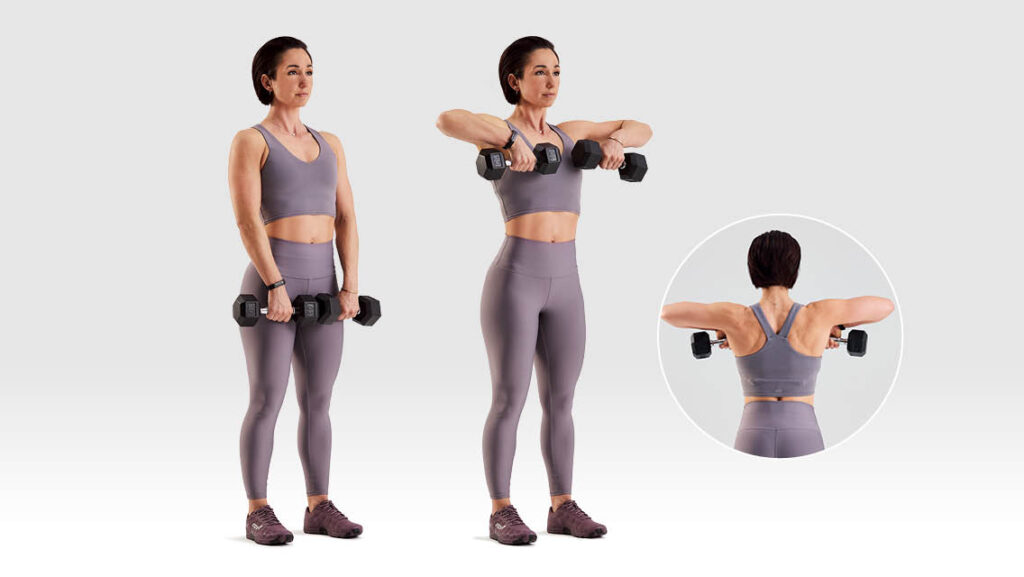
Muscles worked: Delts, traps, rhomboids, biceps.
How: Use an overhand grip to hold a dumbbell in front of your body with one hand. The weight can be raised towards your chin by raising your elbow up and out to the side while activating your shoulder muscles.
The unilateral exercise known as the upright row might help you correct any muscle imbalances that have developed over the course of your weightlifting career. Your range of motion, which is important for almost every upper-body exercise you can think of, is also increased by the action. Always maintain a forearm-to-elbow ratio.
Step-ups
Muscles worked: Quads, hamstrings, glutes, core.
How: Position your left foot on the platform, raise yourself by pushing up through your heel, and place your right foot on the high platform. Step back down with your left foot, focusing on flexing your hip and the knee of your right leg. Repeat on the different side.
It is a surefire way to maximize your gluteus maximus, the major muscle liable for extending, rotating and adducting, and abducting from the hip joint. Plus, as a single leg exercise, it will improve the stabilizer strength of the smaller muscles around the joint, covering you against damage.
Dumbbell Spider Curl
Muscles worked: Biceps, triceps.
How: To start this exercise Lie on an incline bench and grab a dumbbell in both hands, letting them hang underneath your shoulders. Using your biceps, curl the dumbbells in the direction of your shoulders. Repeat after making a leisurely return to the starting position.
There are a few advantages. start with your arms hanging forward, you have an excellent range of flexibility than your classic curl permits you for. Additionally, due to the nature of the position, your arm muscles remain constantly tense throughout the whole range of motion.
Dumbbell Scaption
Muscles worked: Back, shoulders.
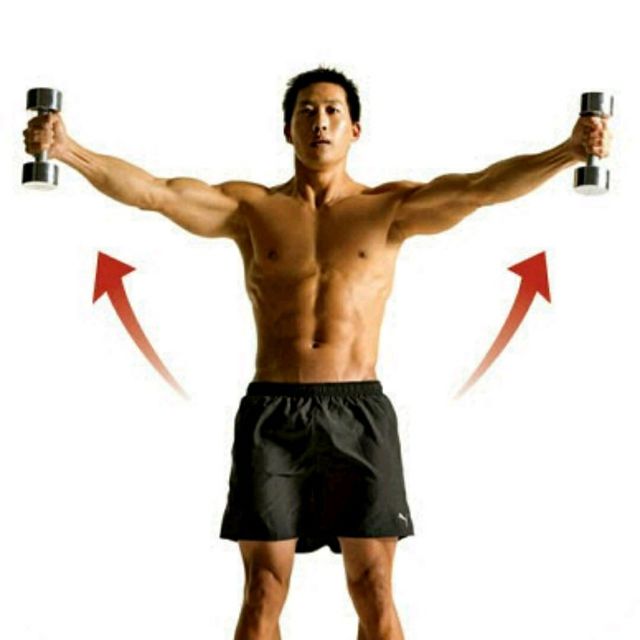
How: hold the weights up to your sides and maintain your arms straight at all times until you feel a strong stretch across your shoulders. go slowly to the starting position.
Rotator cuff, shoulder impingement, and tears are expected issues from overuse activities, but not if you use the scaption. By targeting your stabilizing muscles it covers the shoulder joint and the ligaments surrounding it.
Bent Arm Dumbbell Pull Over
Muscles worked: Serratus anterior, lats, shoulders, triceps, and pecs.
How: Lie down on a flat bench. grab the dumbbell in each hand above you with slightly flexed arms. Keeping your arms flexed, arc the weight back behind your head and then gradually return to the initial position.
This strengthening trains opposing muscles in your chest and back, improves stability, range of motion, and bodily posture. Your pecs and lats get double the attention, resulting in unheard-of muscle growth. when you extend the dumbbell, you will need to constrict your glutes and core muscles to stay balanced.
Reverse Dumbbell Lunge
Muscles worked: Calves, abs, lower back.
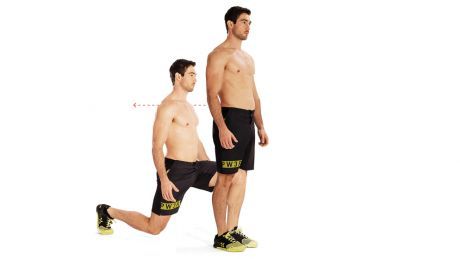
How: While standing, hold dumbbells with your palms facing your body. Bend your front knee so that it nearly touches the floor as you lunge backward as far as you can with your right leg. Pushing your upper body back to the beginning position requires you to use the heel of your right foot. Repeat with the opposite leg.
Don’t sleep on this classic. The best moves are frequently the unconventional ones. Weighted lunges will increase your mobility and stability while also strengthening your back, hips, and legs.
Single-Leg Romanian Deadlift
Muscles worked: Hamstrings, glutes, ankles, and core.
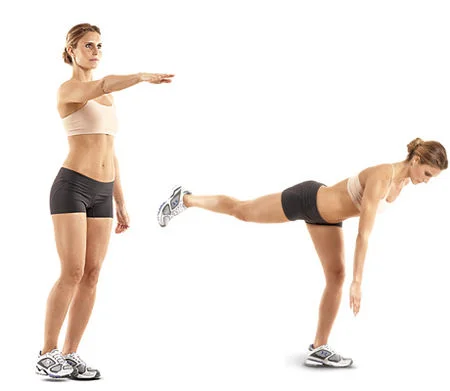
How: Hold two dumbbells with the palms facing inward in front of your thighs. Lean forward and slowly raise one leg straight behind you while bending the other slightly. Your arms should now be lowering the dumbbells toward the floor. Pause, then return to an upright position.
Why: Unilateral leg training results in a significantly stronger deadlift because it demands complete coordination from your ankle, knee, hip, and spine. Pro tip: Avoid allowing the elevated leg’s hip to rotate upward as you lower it, and keep your form when you return to the beginning position. Keep it tight.
Single Dumbbell Shoulder Raise
Muscles worked: Delts, triceps, traps, upper chest.
How: Put one hand on any side of a dumbbell and let it swing between your legs. Directly over your head, elevate the dumbbell; then, bring it back down; and repeat.
As the name implies, the shoulder raise especially strengthens the shoulders but also performs the upper chest muscles.
Dumbbell Calf Raise
Muscles worked: Calves, grip strength.
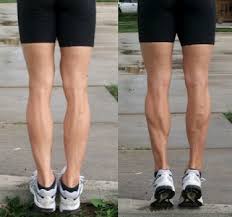
How: Stand straight by grabbing two dumbbells by your sides. Place your heels on the ground and the balls of your feet on a weighted step or plate. With your toes pointing forwards, lift your heels off the ground and squeeze your calf. Gradually return to the initial position.
A staple of leg day, calf raises will make your bigger calves, as well as strengthen your ankle strength and mobility.
Hollow Body Skullcrushers
Muscles worked: Triceps, core, abs.
How: Lie with your back on the floor, your legs extended, and two dumbbells held directly over your shoulders. contract your abdominals, pressing your lower back into the floor. Extend your legs an inch off the floor. Lift your shoulder blades off the floor. Move your upper arms slightly back while keeping them straight. Turning only at the elbows, lower the weights until they nearly touch your shoulders, holding the rest of your body tight in the initial position. Press back up, untangling only at the elbows.
‘Very frequently, people arch their backs barely during skull crushers. You can not do that in the hollow body position because the position naturally forces you to operate with your abs tight, closing your rib cage.
Rotational Decline Weighted Sit-up
Muscles worked: Core, abs.
How: Begin by positioning yourself on the decline bench, and grabbing a lightweight dumbbell in both hands. Lower your trunk down so that it is parallel to the floor. Grab the weight straight out from your chest, holding your arms as extended as possible. Rotate your trunk and arms to one side as much as possible, turning from low in your trunk. Hold for 1 or 2 seconds. Move your upper arms slightly back while keeping them straight. Repeat on the opposing side.
This exercise braces your trunk, turns your spine, turns the trunk, and conflicts rotation of your torso (anti-rotation). You are doing these four things in this one action.’
Dumbbell Thruster
Muscles worked: hamstrings, shoulders, arms, Quads, glutes, and core.
How: Place the dumbbells in the front rack position so that the end of the weights is on your shoulders. Squatting down by keeping your chest open until your thighs break similarly. Go through the heels explosively back to standing posture, and let the measure of the squatting power the dumbbells into the overhead position. For the following repetition, return the dumbbells to your shoulders.
This is a great way to see a multitude of uses from one singular move. This pushes your cardio by delivering a shoulder and quad pump to get the job done. It is not usually that combining two activities is worth the payoff, however, the variety of the squat and overhead press rockets your heart rate, making it ideal for a cardio finisher.
Overview
- Total Time: 35 to 45 minutes
- Level: Intermediate to advanced
- Equipment Needed: pair of Dumbbells
- What to Expect: Beginners initiate with no weight or light weights and accomplish one set of 10 to 15 reps of individual exercise. Adept exercisers do 2 to 3 sets of 10 to 12 repetitions with enough weight that they can meet the rep range feeling as though they would fail if they tried 2 to 3 more repetitions.
Safety and Precautions:
Consult your doctor before trying this training if you have any damages, illnesses, or other medical disorders that affect your capacity to exercise. Replace or skip any activities that cause pain or discomfort. You will need a bench or step (you can use the floor if you don’t have one) and dumbbells in various sizes.
- Make sure you are wearing comfortable clothes and proper footwear.
- Warm up before beginning any exercise.
- Eat light before training, but do not exercise on a vacant tummy.
- Do not consume food just after exercising.
- While performing an exercise, make sure your fluid intake and drinking water should be more.
- Take small breaks as applicable.
- Do not do any activity if you are suffering from health issues, consult your physician then start the exercise.
- The identical muscle group should be trained 2 to 3 days a week with at least 40 hours dividing the same muscle group.
When you should avoid these exercises?
- If you are suffering from a recent fracture or injury.
- if your physician instructed you to rest.
- If you are sick.
- If this activity causes you any discomfort.
- If you are recently undergone any surgery.
- If your vitals are unstable.
- If you are suffering from back issues.
FAQs
How long should a full-body dumbbell workout last?
Three days a week, lifting weights for 20 to 30 minutes is advised for a full-body workout. But it’s simple to commit typical errors that put your health in danger or delay the results that you want.
Can we do a full-body dumbbell workout daily?
An excellent training divide to use is full-body exercises. It’s not recommended to work out your entire body every day, though. This is because doing this every day won’t allow your muscles enough time to heal as you’ll be activating them all at once. A reasonable rule of thumb to follow is 2-3 days.
Are full-body dumbbell workouts effective?
Using just dumbbell exercises, you may increase your strength and burn fat. Exercises with dumbbells are also a wonderful approach to strengthen your core because you don’t need a machine to keep you stable; instead, your body automatically stabilizes itself as you move.
How often should I work out with dumbbells for the entire body?
According to the research, At least three days a week must be spent working out with weights. According to the research, to maximize muscle growth, training should take place at least two days a week.
What are the benefits of full-body workouts?
5 Major Benefits of Total-Body Workouts
Burn More Calories in Less Time
We strive for time efficiency in every other aspect of our life, so why not do the same at the gym?
Build More Muscle.
Increase Strength.
Maximize Workout Efficiency.
Have Greater Flexibility.
How many calories does a full-body dumbbell workout burn?
According to a person’s body weight, lifting weights for 30 minutes can often result in a calorie burn of between 90 and 126. High-intensity weight training for 30 minutes can burn anywhere between 180 and 252 calories, depending on a person’s body weight.
Are full-body workouts more effective?
Exercises that include the entire body typically result in a higher total energy expenditure per session (you burn more calories). If you skip a workout, it won’t be a big issue. You’ve worked for every muscle group twice if you train three times a week and miss one session.
Who should do full-body workouts?
A full-body workout might be your best option if you want to improve your general physical condition, lose weight, or gain lean muscle mass. You may reap the rewards of both strength and cardiovascular training with a full-body exercise.
How many exercises are necessary for a full-body workout?
Over the full week, aim for 6–12 distinct exercises performed in 2–5 sets per muscle group. For hypertrophy, a standard recommendation for rep range is 6–12 reps per exercise with a weight of 60–80% of your 1RM.
How many muscles should you work out?
Which muscles should I work on together? To maximize growth, it’s best to focus on just one major muscle group each session (chest, legs, or back). Exercises that target the biceps, triceps, hamstrings, calves, abs, and shoulders are a good way to round up your workout.

